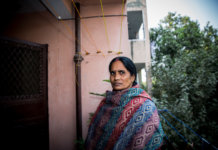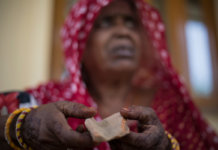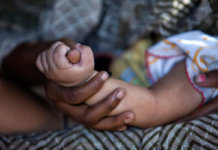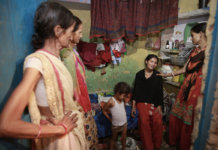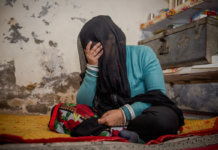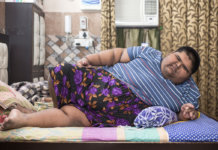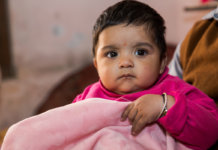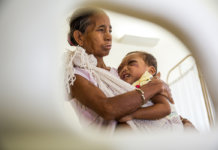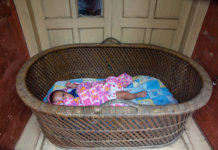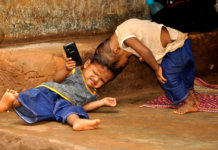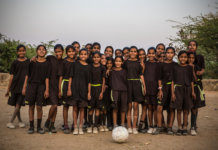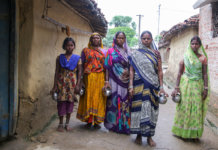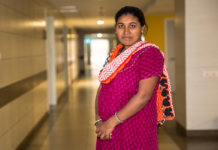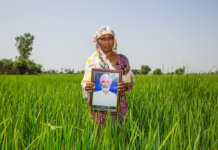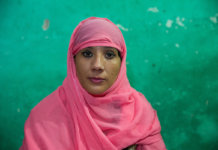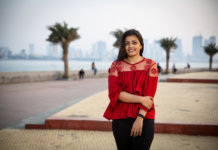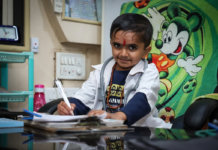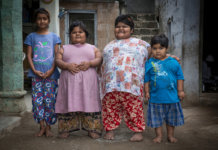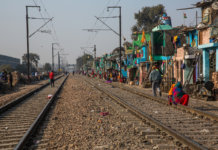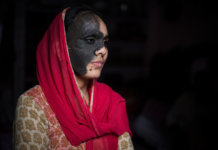A brother and sister in India suffer from a rare skin disorder that leaves them with skin like a snake.
Sayali Kapase, 13, and her brother Siddhant Kapase, 11, from Pune, in Maharashtra, central India, have skin so dry that scales have formed all over their body, which resemble the skin of a snake.
They have to keep their skin constantly moist with a selection of lotions three times a day, and they have poor eyesight and weak bones.
They’re often teased for their appearance and people stare at them on the streets but their doctor has said there is no cure for their condition.
Sayali said: ‘I’m disgusted when I see myself in the mirror. I wonder why God made my brother and me this way. People call us names like ghost and witch. I aspire to be an accountant but I wonder if anyone would offer me a job with this condition.’

Sayali and Siddhant were born with Lamellar Ichthyosis, an autosomal recessive disorder in which a newborn is born covered in a collodion membrane that sheds within 10-14 days. The flaking of the membrane reveals generalized scaling with variable redness of the skin.
Their father Santosh Ramchandra Kapase, 39, mother Sarika Kapase, 31, and nine-month-old sister Manasvi Kapase, are all well and do not show signs of the condition.

Santosh, who works with auto-parts earning around Rs 9,000 (£90) a month, said: ‘My only dream is to see them cured. They were denied admission to several schools due to their condition and children often run away from them. People assume it’s contagious and they will also catch the disease. But in the end we found a government school nearby, even though they sit on their own and children refuse to play or study with them. Their parents have even instructed their children not to speak to our children and maintain a distance.’
Santosh said Sayali is affected the most by her condition and often cries by the way other people treat her.
‘Sayali is very emotional; being a girl she takes everything to heart.’
But Santosh refuses to allow judgmental people to stop his children from living.
He added: ‘I refuse to keep them at home liked caged animals. I take them everywhere so they can get used to it and learn to cope with people’s attitudes.’
Santosh has already spent over Rs1,200,000 (£13,000) on their treatment, hoping there’s a cure but doctors can only help their condition, not cure it.

Sarika was shocked to see her first born with the condition. She said: ‘When she was born it was like she was wrapped in a plastic bag. She was red and I feared touching her. Her skin started flaking off within 15 days and I prayed for her life.’
After two years, Santosh and Sarika decided to have another child, but when Siddhant was born the parents were heartbroken to see him suffer the same problem.

‘None of the doctors warned us this could happen before we planned another child. I was happy to have another child but to know he suffered the same skin broke me inside,’ Sarika said. ‘I did not know whether to feel happy about his birth or sad about his condition.’
In 2013, the family received some hope from Dr. DY Patil Medical College and Research Centre, a private hospital run by a charity trust.
Dr Aayush Gupta, 29, senior resident at the department of dermatology, saw the children and was moved by their condition. He started treatment on the siblings and gave them drugs that could ease their problem.
‘The children cannot even move properly due to the thickness of their skin.’
Dr Aayush has also tested Santosh and Sarika, who are not related which is often normal in India, for any genetic condition so they can plan the future of their family.
He added: ‘These siblings were born of a non-consanguineous marriage. The gene that is mutated is TGM1 and both parents had a copy of it. The children would have not suffered if one of the parents had this mutated gene but since both parents had it, it was unavoidable for the children.

Sarika now worries for Sayali’s marriage prospects in the future and wonders if any man would accept her as the bride.
‘I cannot dream like other mothers do for my daughter’s wedding,’ she said. ‘Every mother has aspirations to see her daughter growing up and getting married. I do not feel the same. No mother would like to see her children in this condition. When people stare, it is so traumatic. They are normal human beings and should be treated the same. Every child should live a normal life. They have already suffered a lot, I do not how long we can go on for.’

